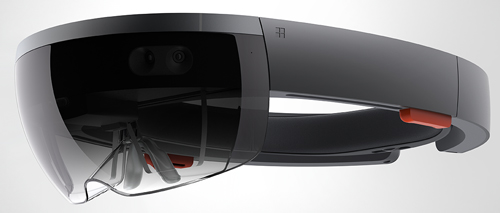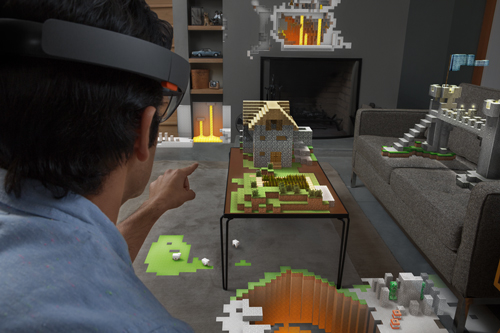How HoloLens Reframes Microsoft's Minecraft Buy and How It Matters to Businesses
Back in September, when Microsoft paid $2.5 billion for the Swedish company that makes Minecraft, CEO Satya Nadella seemed to be groping blindly.
The Mojang acquisition was the fourth largest in dollar terms in Microsoft's history. But for that enormous pile of money, Microsoft was getting a low-resolution video game that seemed like it might have peaked. Yes, the game, involving chunky animated figures moving through an open world that players build with Lego-like digital blocks, was wildly popular, but it's never clear how long that will last in the famously fickle arena of preteen tastes.
Was this another example of Microsoft leaping too late for a bandwagon and spilling cash all over the road in the process? The company's initial explanation wasn't reassuring: "Gaming is a top activity spanning devices, from PCs and consoles to tablets and mobile, with billions of hours spent each year," Nadella said in a statement at the time. "Minecraft is more than a great game franchise -- it is an open world platform, driven by a vibrant community we care deeply about, and rich with new opportunities for that community and for Microsoft."
Looking for logic beyond the explanation, observers speculated that Microsoft wanted to keep itself fresh in the eyes of tomorrow's tech customers. But $2.5 billion was a lot of money for a little brand advertising.
In retrospect, the key phrase in Nadella's statement was "rich with new opportunities for that community and for Microsoft."
As Nadella was closing that deal, Kinect inventor Alex Kipman and his team were hard at work in a secure lab hidden beneath Microsoft's visitor center and company store working on Project HoloLens.
Unveiled at the Windows 10 media event in Redmond on Wednesday, HoloLens was a complete surprise. Microsoft bills HoloLens as a wireless holographic computing platform. The wrap-around goggles, which will work with Windows 10 and are supposed to be generally available later this year, combine special lenses with cameras and other technologies to allow a user to see the surroundings but also see computer-generated objects and images in three dimensions as if they were in the world.

Minecraft played an important role in the demos, but it's not just another example of one of the many cool things that could theoretically be done with the HoloLens. By controlling Minecraft development, Microsoft now has the opportunity to optimize Minecraft and HoloLens together to potentially create a nurturing market of Minecraft enthusiasts. Those buyers could give the holographic product financial viability as Microsoft fine tunes the technology and develops other applications itself and with strategic partners. Remember Geoffrey A. Moore and Crossing the Chasm?
Here's why Minecraft is a perfect fit. In one live demo Wednesday, a Microsoft employee created a UFO-quadcopter. The technology was impressive as she manipulated the image in virtual space and combined pieces together. Yet the motions were awkward, imprecise and complicated. The building process looked difficult to use, with some operations requiring the demonstrator to use specialized voice commands and other input to get things to work. This is absolutely to be expected in a new technology, but early adoption will be difficult.

Minecraft, however, in all its blocky simplicity requires only the crudest controls and little precision for most of its operation. As complicated as holographic computing must be, it's hard to imagine an easier application to apply it to than Minecraft. And for a Minecraft player, the benefit would be enormous in being able to walk right into the world you'd created, or in creating Minecraft worlds on the floors, shelves, tables and walls of your house.
It's a gamble by Microsoft that Minecraft fans will be willing to pay whatever Microsoft decides to charge for the HoloLens, but it could very well come to pass. And then Microsoft would have more freedom and encouragement to build on that success by continuing to develop the HoloLens in ways that truly enable those transformative business applications.
It turns out that what looked like blind groping a few months ago, was actually Nadella grabbing something that only he could see through secret holographic lenses.
See Also:
Posted by Scott Bekker on January 22, 2015